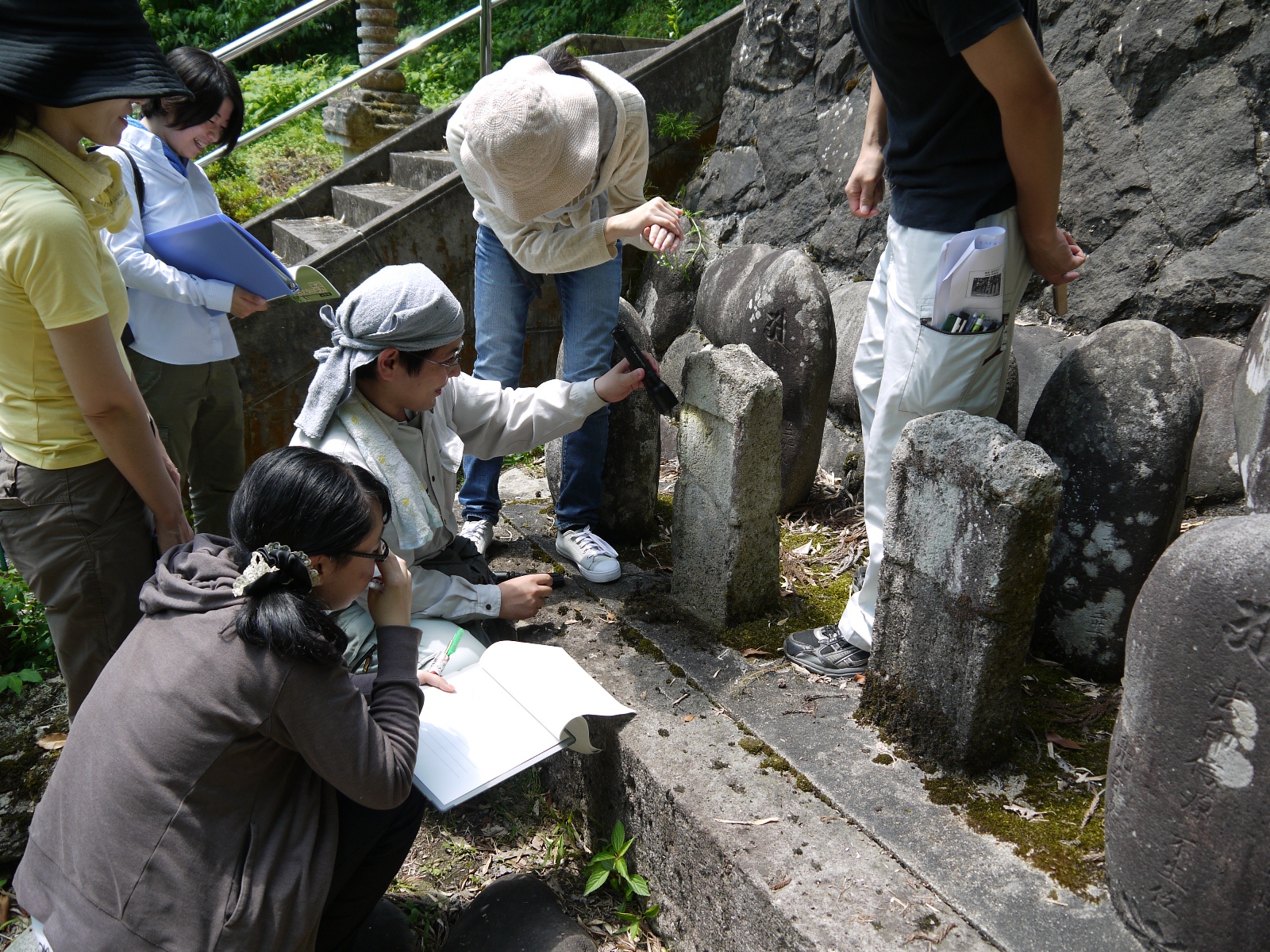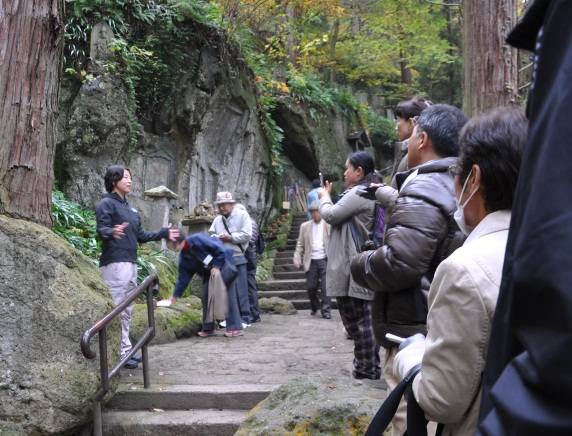







Home > Research > Research Overview > 2023 > Office of Academic Affairs 4
Professor, Institute of Arts and Sciences(Archaeology)
ARAKI Shinobu
Risshakuji (also often called Yamadera) is one of the northernmost Shinto and Buddhism sacred sites of Japan. It is a Buddhist temple in the mountains and was founded in the 9th century. Risshakuji is famous for Matsuo Basho’s haiku “Shizukasa ya, iwa ni shimi iru semi no koe” (translated by Arthur Binard to “Up, here a stillness—the sound of cicadas seep into the crags” in English; originally published in Oku no Hosomichi [The Narrow Road to the Deep North], 1702). On the grounds of the temple, numerous stupas and gosho-gurumas that are dedicated to the deceased or deities are quietly hidden behind rocks. The temple was a sacred place in folk religions and was sometimes called “oku no Koya” (meaning “the Koyasan of the deep north”) between the 17th and 19th centuries.
However, Risshakuji was caught in military conflicts during the 15th and 16th centuries and very few historical documents that can be studied survive in its premises. Therefore, the university conducted archaeological surveys of about 1,000 stone cultural properties around the temple, along with an analysis of the inscriptions on them. Results show that after the entire site was burnt down in 1521, residents of the Yamagata Basin and nearby areas were greatly involved in restoring Risshakuji, up until around the early 18th century, and this was a sacred site that had strong connections with local communities. More recently, the university is conducting studies at other sites as well, such as the Dewa Sanzan (the Three Sacred Mountains of Dewa), Matsushima (Zuiganji and Oshima) and Jionji, and has been comparing the results between them.
The history of the commoners who do not leave their marks in history tend to be left out of narratives of the bigger picture. Cultural properties are surviving witnesses of the history that local people cherished with great pride over the years. Acknowledging the roles of these cultural properties in the efforts to facilitate the revitalization of rural communities, we would like to study further with the help of various stakeholders.


Related Links